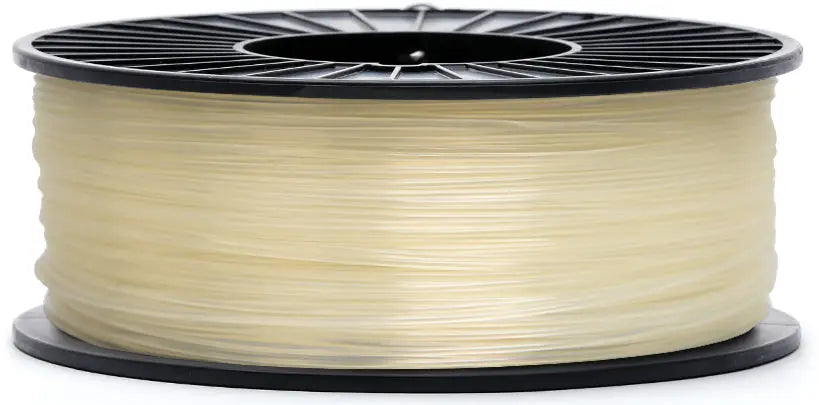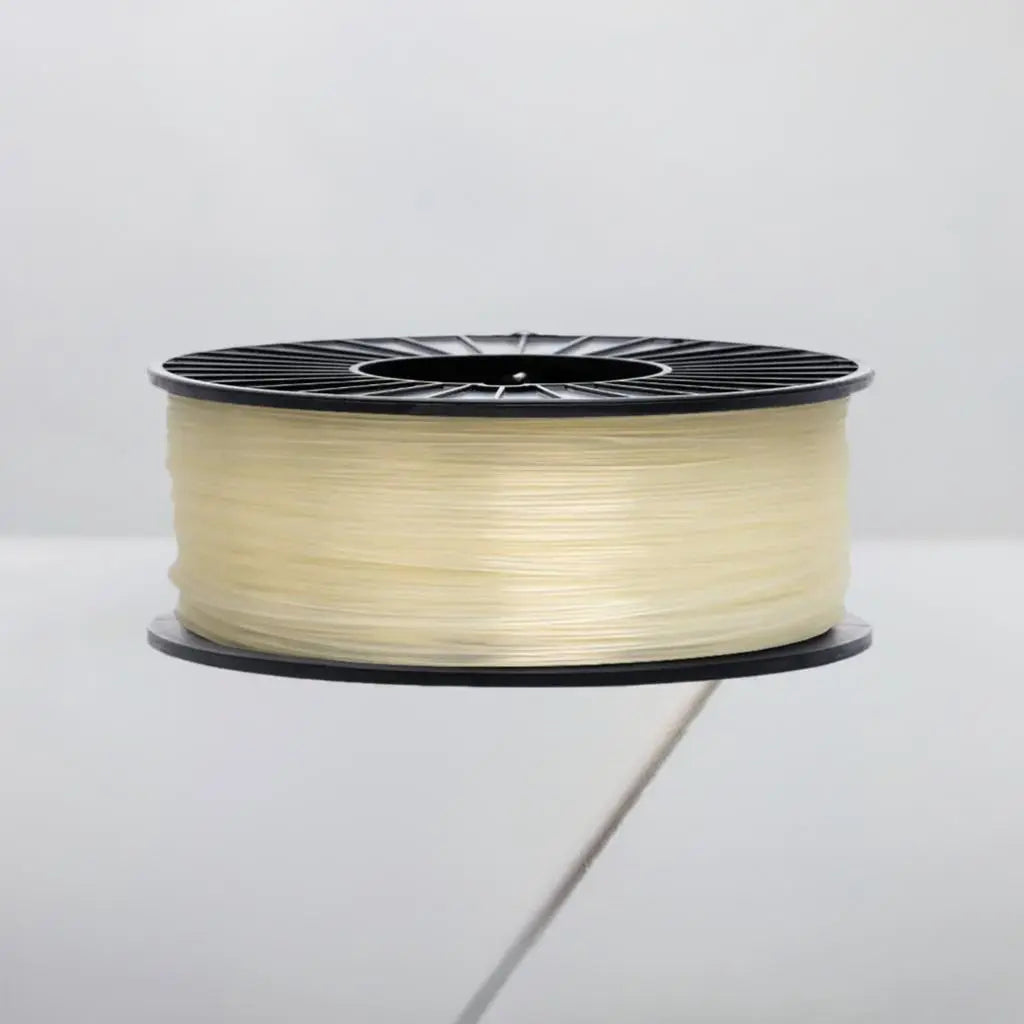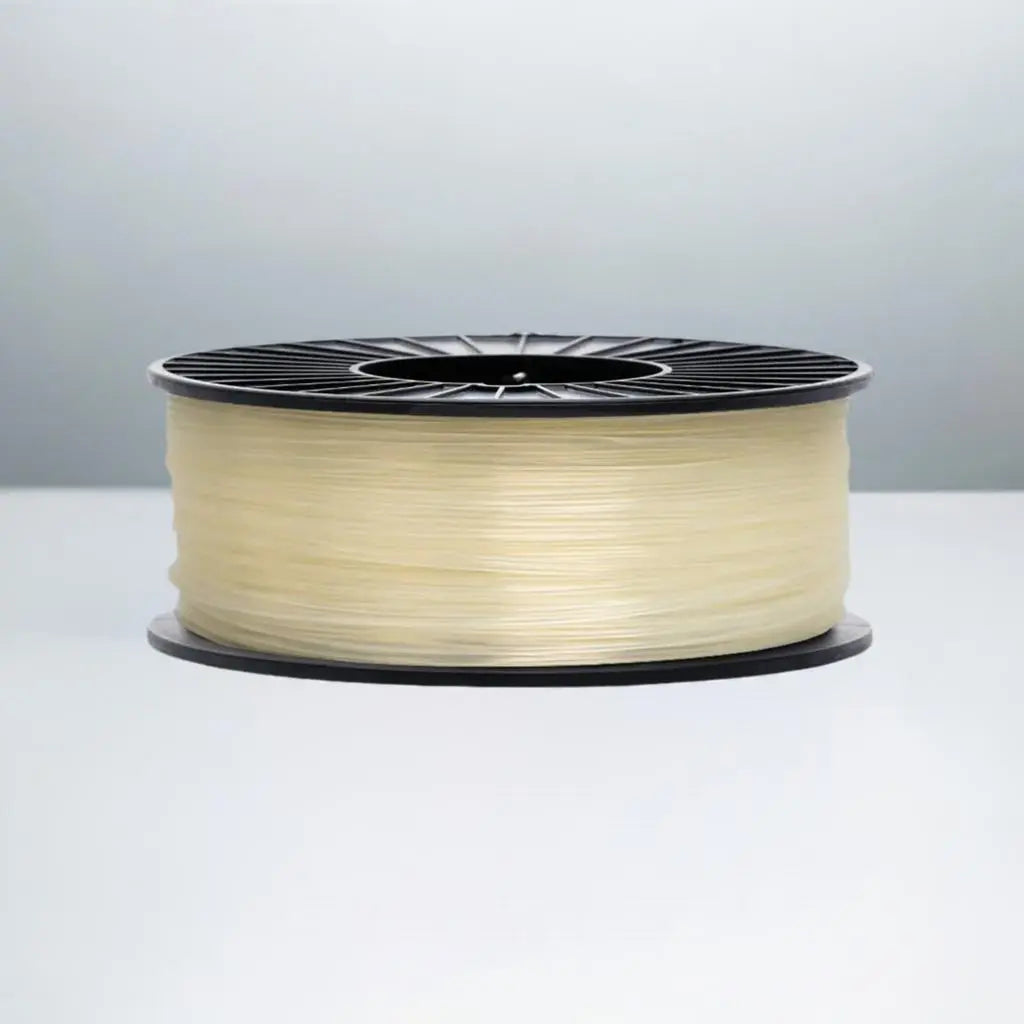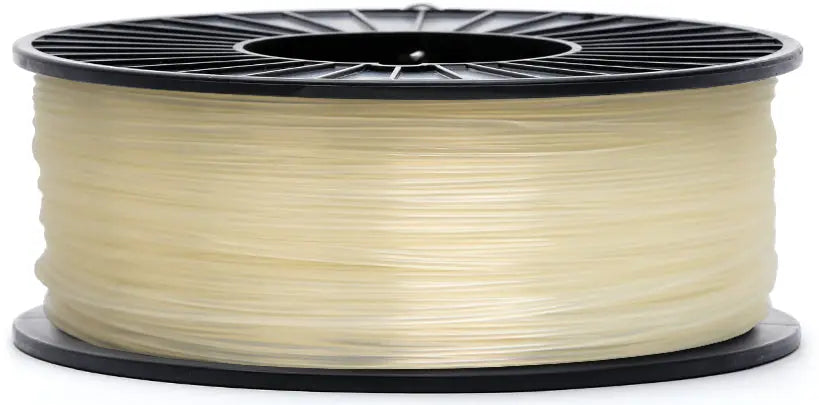
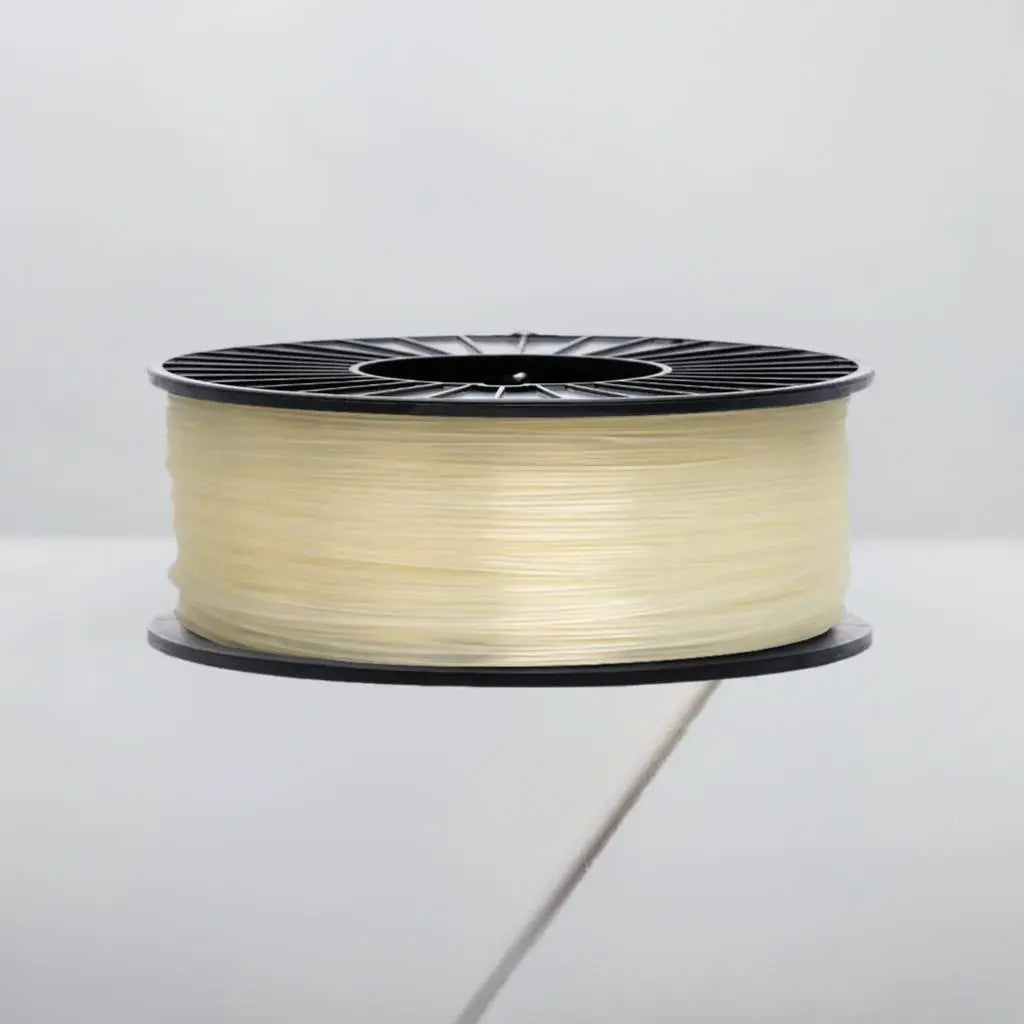
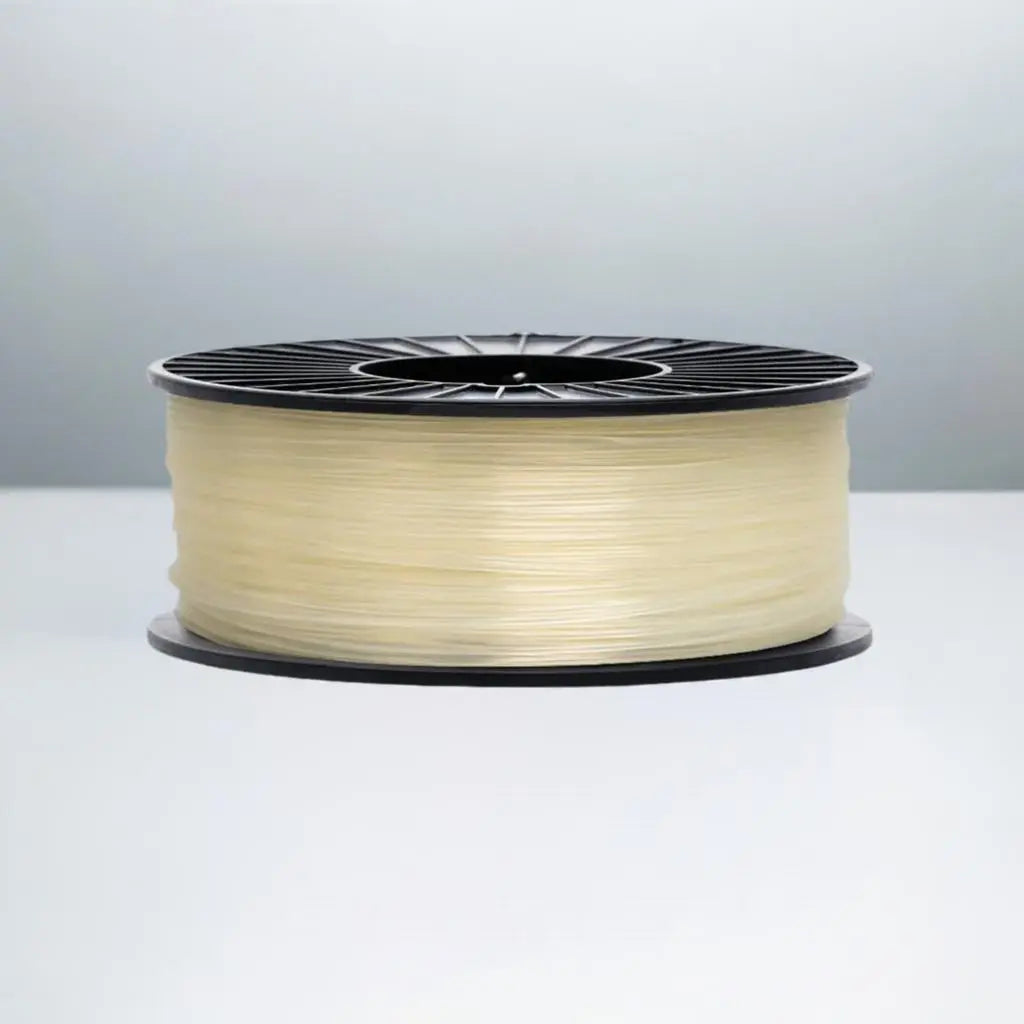
Natural CoexFlex™ 30D TPE
TPU-Like Flexibility, Faster Printing, Greater Strength
Experience flexible printing without the fuss. CoexFlex™ 30D TPE (TPC) delivers the same smooth, rubber-like performance you expect from TPU—but prints faster and with superior strength, heat, and chemical resistance.
With excellent layer adhesion and a soft 30D Shore hardness, it’s ideal for parts that need to flex, bend, and endure repeated use. From protective grips to seals and functional prototypes, CoexFlex™ 30D maintains durability where TPU can fall short.
Formulated from a Thermoplastic Copolyester Elastomer (TPC), it offers exceptional temperature and abrasion resistance while remaining easy to print on any TPU-capable setup.
Proudly made in the USA.
Benefits of CoexFlex™ Filament
- Excellent layer adhesion
- Great durability
- Wide range of hardness options (60A, 30D, 40D, 60D)
Uses
- Soft handles and grips
- Protective cases and skins
- Custom-shaped seals and gaskets
- Soft and flexible functional parts
Recommended Print Settings
- Hotend Temperature: 205 °C - 250 °C
- Bed Temperature: 25 °C - 85 °C
- Heated Bed Recommended
- Recommended Build Surfaces/Adhesives:
- Magigoo
- Magigoo Flex
- Painter's Tape
- Gluestick
- PEI
- Part Cooling Fan Recommended
Technical Printing Guide - COEXFLEX 30D
1. Material Notes
- Keep filament dry - store properly and dry before use
- If needed, dry at 55°C for 4 hours or more
- Preferably use direct drive extruder
- Print multiple parts sequentially to minimize stringing
- Use maximum travel speed to minimize stringing
2. Temperature Settings
Bed Temperature: 25-85°C
Extruder Temperature: 205-225°C
3. Basic Parameters
Unlike rigid filaments, TPE stretches when extruded, producing thinner lines. The line width will be smaller than the nozzle diameter. To ensure proper bonding between vertical walls and perimeters
| Nozzle | Layer Height | Line Width | Volumetric Speed | Temperature |
| 0.4mm | 0.2mm | 0.35mm | 2.5 mm³/s | 240°C |
| 0.6mm | 0.3mm | 0.55mm | 5.6 mm³/s | 240°C |
| 0.8mm | 0.4mm | 0.75mm | 10.0 mm³/s | 240°C |
| 1.0mm | 0.5mm | 0.95mm | 15.6 mm³/s | 240°C |
4. Speed Settings
0.4mm Nozzle (Volumetric Speed: 2.5 mm³/s)
| Line Type | Percentage | Speed |
| External Perimeter | 50% | 17.86mm/s |
| Internal Perimeters | 75% | 26.79 mm/s |
| Infill | 100% | 35.71 mm/s |
| Top/Bottom | 60% | 21.43 mm/s |
| First Layer | 30% | 10.71 mm/s |
0.6mm Nozzle (Volumetric Speed: 5.6 mm³/s)
| Line Type | Percentage | Speed |
| External Perimeter | 50% | 17.00 mm/s |
| Internal Perimeters | 75% | 25.50 mm/s |
| Infill | 100% | 34.00 mm/s |
| Top/Bottom | 60% | 20.40 mm/s |
| First Layer | 30% | 10.20 mm/s |
0.8mm Nozzle (Volumetric Speed: 10.0 mm³/s)
| Line Type | Percentage | Speed |
| External Perimeter | 50% | 16.67 mm/s |
| Internal Perimeters | 75% | 25.00 mm/s |
| Infill | 100% | 33.33 mm/s |
| Top/Bottom | 60% | 20.00 mm/s |
| First Layer | 30% | 10.00 mm/s |
1.0mm Nozzle (Volumetric Speed: 15.6 mm³/s)
| Line Type | Percentage | Speed |
| External Perimeter | 50% | 16.42 mm/s |
| Internal Perimeters | 75% | 24.63 mm/s |
| Infill | 100% | 32.84 mm/s |
| Top/Bottom | 60% | 19.70 mm/s |
| First Layer | 30% | 9.85 mm/s |
5. Retraction Settings
IMPORTANT: Set travel speed to the maximum your machine allows (200-500mm/s). Faster movements reduce filament oozing time, minimizing stringing.
| Nozzle | Distance | Speed | Z-Hop |
| 0.4mm | 1.8-2.8mm | 35mm/s | 0.2mm |
| 0.6mm | 1.8-2.8mm | 35mm/s | 0.2mm |
| 0.8mm | 2.0-3.0mm | 35mm/s | 0.2mm |
| 1.0mm | 2.0-3.0mm | 35mm/s | 0.2mm |
6. Cooling Settings
Cooling Configuration:
- General: 0% (fan off)
- Force fan speed for overhangs and bridges: OFF
- Layers < 20 seconds: 40% fan
- First layer: 0%
7. Troubleshooting Guide
| Problem | Solution |
| Irregular extrusion |
1. Dry the filament 2. Check extruder 3. Reduce speed |
| Poor adhesion |
1. Dry the filament 2. Use adhesive 3. Adjust first layer |
| Stringing |
1. Dry the filament 2. Adjust retraction 3. Increase travel speed 4. Check temperature |
PLEASE NOTE: These printing parameters are initial recommendations based on our experience. They may need adjustment depending on your specific 3D printer, environmental conditions, and the geometry of the part you are printing. Use these settings as a starting point and fine-tune them according to your specific needs.


